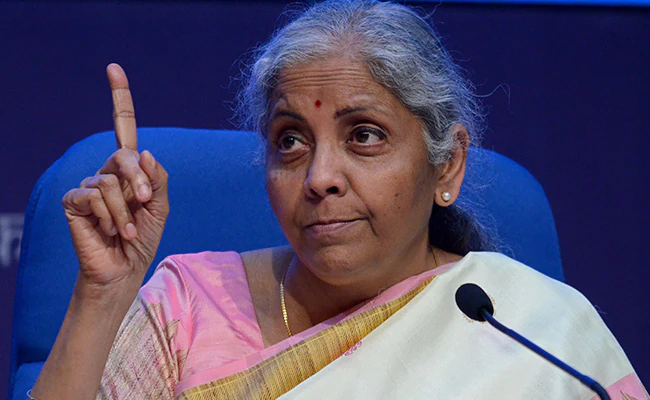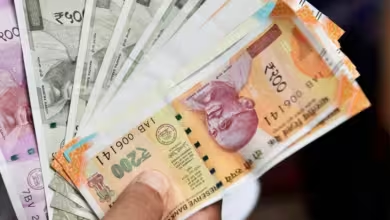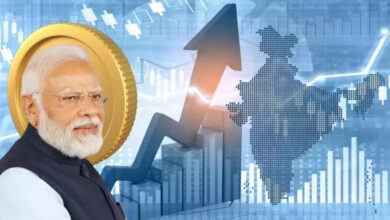Retired Justice Sunjaya Kumar Mishra appointed as first president of GSTAT by FM Sitharaman
India's monthly GST collections reached ₹2,10,267 crore, surpassing the ₹2 lakh crore threshold for the first time

On Monday, May 6th, 2024, Union Finance Minister (FM) Nirmala Sitharaman administered the Oath of Office to Justice (Retd.) Sanjaya Kumar Mishra was the first president of the Goods and Services Tax Appellate Tribunal (GSTAT) and called it as one of the two ‘significant milestones’ in the larger GST architecture.
The second, in her words, was the first time since the Modi government’s July 1, 2017, implementation of the indirect tax reform, that the monthly revenue collection threshold was exceeded, totaling ₹2 lakh crore. According to FM, the world’s fastest-growing major economy, India, is experiencing “heightened” economic activity, as seen by the increased GST receipts.
India’s monthly GST collections reached ₹2,10,267 crore, surpassing the ₹2 lakh crore threshold for the first time. Additionally, collections in FY24 exceeded the ₹20 lakh crore barrier, indicating a robust economy and improved compliance.
The second part of the note focused on the impact of the indirect tax on people and the ease of total tax burden. “Reflecting a pro-poor approach, the effective weighted average GST rate has consistently fallen since 2017. The Revenue Neutral Rate was suggested to be 15.3% but was lower at 14.4% in 2017, and it has come down to 11.6% in 2019,” she said.
The Hon’ble Chief Justice of India led a search-cum-selection committee that chose the first President of GSTAT, Justice (Retd.) Mishra, who served as Chief Justice of the Jharkhand High Court. The Government has notified a Principal Bench and 31 State Benches of the GSTAT, and the process for appointment of judicial and technical members is already in progress, the Finance Ministry said.
The Centre said on September 15 that 31 state benches will be established for the GSTAT. With Justice (Retd.) Mishra’s appointment, the GSTAT—a vital forum for settling issues pertaining to the Goods and Services Tax—begins to function.
The Central Goods and Services Tax Act, 2017 created the GSTAT as the Appellate body to hear appeals under the Act and the appropriate State/Union Territory GST Acts against the decisions made by the first appellate body. A Principal Bench and many State Benches make up this arrangement.
According to FM, the tax reform augmented the revenues of both the Centre and the states. “GST has improved tax buoyancy from 0.72 (pre-GST) to 1.22 (2018-23). Despite compensation ending, state revenues remain buoyant at 1.15. Without GST, states’ revenue from subsumed taxes from FY 18-19 to 2023-24 would have been ₹37.5 lakh crore. With GST, states’ actual revenue amounted to ₹46.56 lakh crore,” she said.
Prior to the introduction of GST, India’s indirect tax system was disjointed and convoluted, with each state functioning as a virtual independent market with its own set of regulations and tax rates. According to the FM, the inability to get inputs for central excise duty and other related taxes resulted in a higher tax burden for the general public.
The Principal Bench, which will be based in New Delhi, and the 31 State Benches, which will be dispersed around the nation, have been notified by the Government with the agreement of the GST Council. The procedure for appointing technical and judicial members is already in place.
The Tribunal will considerably lessen the workload on higher courts while guaranteeing a prompt, equitable, prudent, and efficient adjudication of GST issues. The creation of the GSTAT will promote a more open and effective tax environment in India and further improve the efficacy of the GST system.
“The Tribunal will ensure swift, fair, judicious, and effective resolution to GST disputes, besides significantly reducing the burden on higher courts. The establishment of the GSTAT would further enhance the effectiveness of the GST system in India and foster a more transparent and efficient tax environment in the country,” the ministry said in a statement.
Experts predicted that the nomination of Justice (retd) Mishra to lead the GSTAT would advance the indirect tax reform by quickly resolving outstanding disputes.
A few states’ political resistance and technological issues prevented the GSTAT from being established earlier. The Union cabinet agreed on the establishment of a national bench of the GSTAT on January 23, 2019, but the topic remained unresolved due to disagreements among members over how to preserve the proper federal balance and other technical matters.
The GST simplified the tax system by condensing 17 levies and 13 cesses into a five-tier framework. The registration barrier for goods and services increased to ₹40 lahks and ₹20 lahks, respectively, from an average of ₹5 lahks under VAT. She said that GST also cut the number of submissions (challans, forms, declarations, etc.) from 495 to only 12. Sitharaman took this opportunity to recall the nearly seven-year tax reform journey in three parts that unified the domestic markets.
“The first part explores the origins of GST and its role in streamlining the Indirect tax system. The second part discusses how GST has benefitted people through a pro-poor approach. The third part underscores GST’s role in promoting cooperative and fiscal federalism,” she said in a post on X (formally Twitter).
According to her, “the idea of GST was first mooted during the former PM Atal Ji-led NDA government. In 10 years, UPA was unable to achieve political consensus on GST. Under the leadership of Prime Minister Shri @narendramodi, the necessary consensus was carefully built, and GST Acts were passed by Parliament in 2016,” she said.
In the third part of her write-up, the Union finance minister underscored the impact of GST on strengthening the Indian federal structure. “GST exemplifies Cooperative Federalism in India, empowering states. The @GST_Council, with a 75% majority vote requirement, assigns one-third voting power to the Centre & two-thirds to states. Out of 52 meetings, all decisions but one was reached through consensus. As Chairperson of @GST_Council, I have ensured all states’ voices are equally heard without bias,” she said in another post in X.
“GST is an expression of Modi Govt’s commitment to ‘Sabka Saath, Sabka Vikas, Sabka Vishwas, Sabka Prayaas’. Our continuous efforts are towards ensuring that new heights are scaled through better taxpayer services and increased efficiencies instead of increased taxes,” she added.
You might also be interested in – World’s most powerful women of 2023: Giorgia Meloni and Nirmala Sitharaman secure notable rankings



